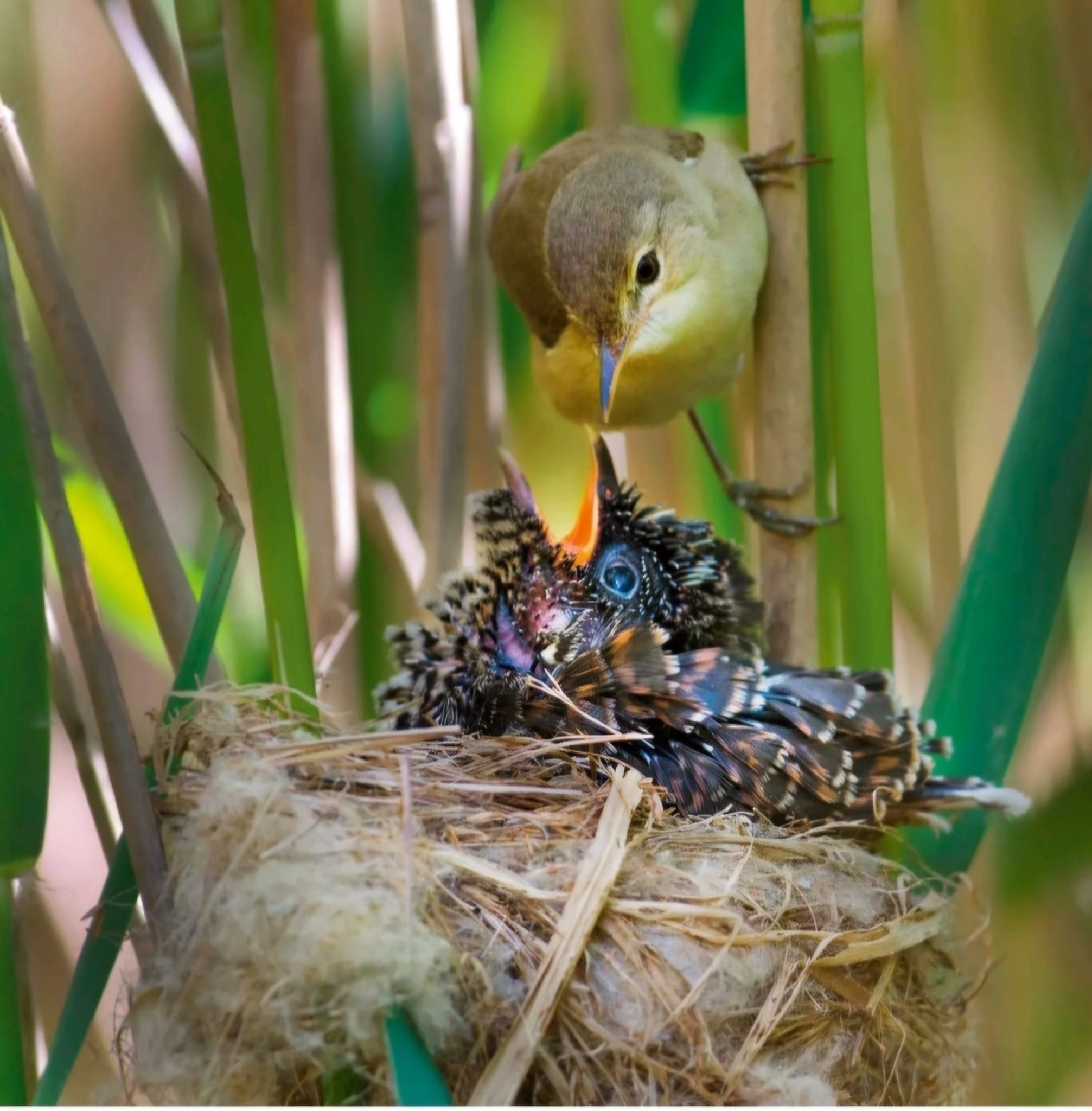
Nature’s fakes and frauds
Some plants, animals and insects just aren’t what they seem, as I found out for Country Life, 10 November edition.
The stinkhorn, a fungus whose Latin name Phallus impudicus (‘shameless phallus’) tells you everything you need to know about its shape, is not all it seems. It’s not even what you think it seems. It uses mimicry to survive and replicate – but not in the visual way that led the male members of Victorian society reputedly to cudgel it down lest passing ladies should require the smelling salts. (Charles Darwin’s daughter Etty enjoyed a game of seeking out stinkhorns but felt she had to burn them secretly ‘because of the morals’ of her maidservants.) The stinkhorn’s most effective mimicry comes from what it smells like – rotting flesh. This attracts blowflies and other insects to feed on its thick, spore-laden slime. They duly fly away and disseminate its undigested spores. Mission accomplished.
The saucy saphrophyte – the name for a fungus that lives on decaying matter – is far from the only living thing to use fakery to trick another species. This type of deception is as widespread in Nature as the stinkhorn hopes its spores will be.
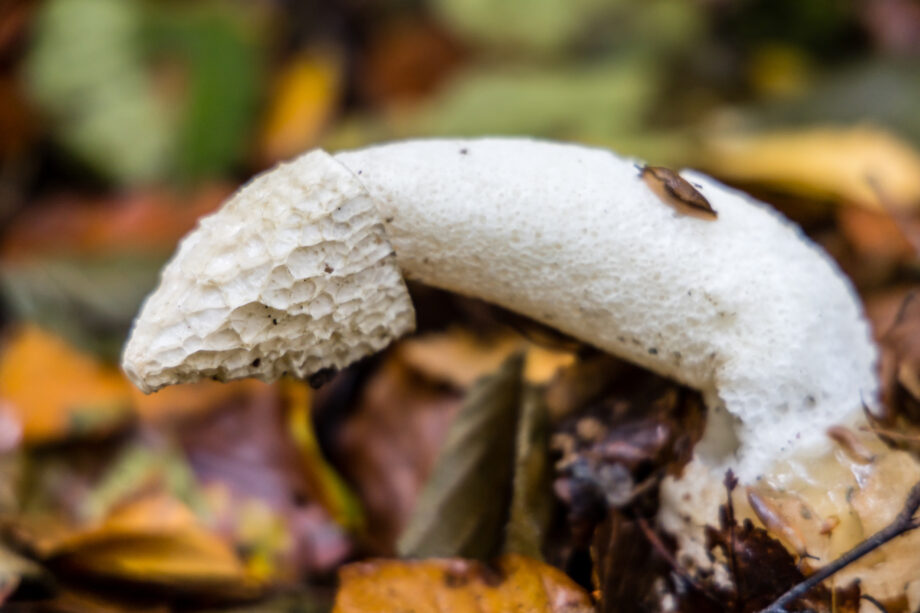
The cuckoopint, another plant with phallic characteristics and a common sight in spring, also disperses carrion-like odours over a wide area by elevating its temperature. This attracts unwary insects such as the owl midge, which slides helplessly down its slippery inner surface to be caught by a ring of tiny spiny hairs and dusted with pollen before being allowed to escape. The round-fruited collar-moss also sends out rotting-flesh odours to attract flies, a bold pretence for a plant that grows only on dung.
More fragrant in the world of insect pollination are flowers that attract bugs by pretending to be insects. The bee orchid is perhaps the most familiar, with its large lower petal or labellum that looks like a female bee or wasp. The shape, along with a distinctive odour, attracts male solitary bees who attempt to mate with it. In the course of their fruitless congress they collect pollen, and so transmit it when they try another fake female. It is effective but perhaps unnecessary – experts at Kew’s Royal Botanic Gardens point out that in the UK, the bee orchid is in fact self-pollinating and so can actually manage fine by itself, thank you. The fly orchid (Ophrys insectifera) is less common here but uses the same visual technique. There are dents on its dark-coloured, narrow-lobed labellum known as pseudo eyes, along with a glistening iridescent wing-like patch, all adding up to a very convincing lady digger wasp.
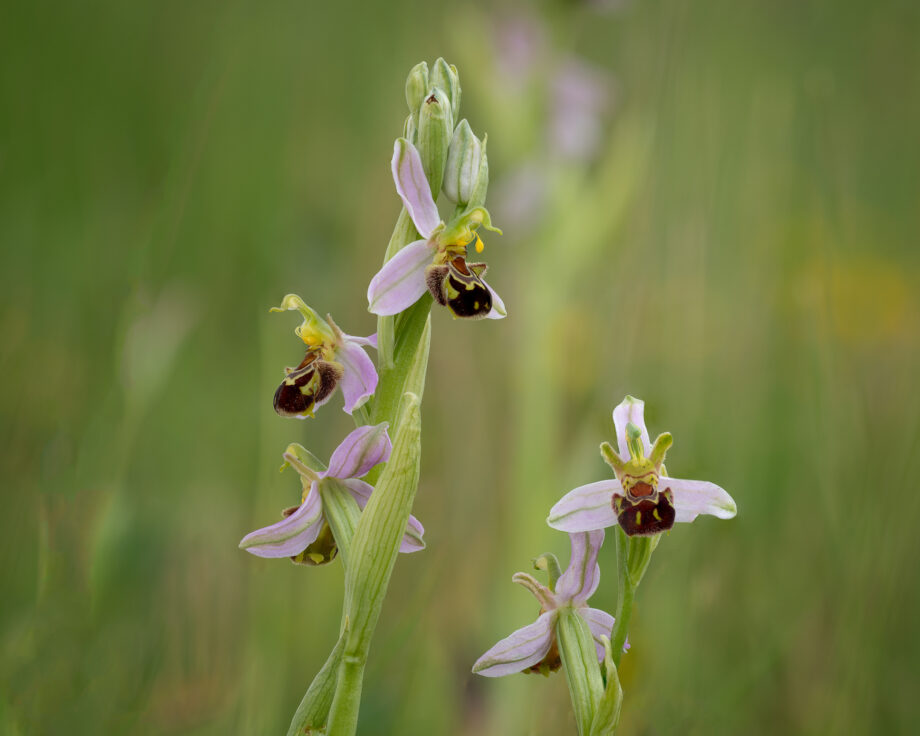
Mimicry in Nature is when a plant or animal gains something by using the signals sought out by another. It’s a three-way strategy involving the mimic, in this case the orchid; its model, here the female wasp; and the signal-receiver, the male wasp. There are fine distinctions between types of mimicry, for example, those fakes that offer their deceived a reward and those that do not. Camouflage is a different, perhaps simpler, level of deception and is about blending in with an inanimate background. Mimics on the other hand, can be quite conspicuous.
Why pretend? One of Nature’s key motivators is reproduction, as illustrated by these fungi and flower examples where the pretence is all about procreation. There are some cases when mimicry is used to avoid copulation. The female common hawker dragonfly, finding herself plagued with males attempting to jump on her even after she has successfully mated and laid eggs, will pretend to be dead. It works, on the whole – around 60 per cent of the females escape. The death feint, also known as thanatosis, is also practised by the female European common frog, which faces actual fatality if too many eager males end up clinging to her.
Some creatures dissemble to avoid being despatched. Chickens and rabbits can enter a state of tonic immobility, a motionless posture practised by the American opossum – hence the term ‘playing possum’ – to persuade predators to seek a fresher dinner elsewhere. Ducks decoy their demise to dupe foxes taking them back to their earths with a plan to eat them later. Experienced foxes know to kill the ducks immediately. Many insects pretend to die when threatened, falling to the ground and tucking in their legs, even when prodded or poked by a predator. Beetles are particularly good at this: Charles Darwin noted one that faked death for 23 minutes.
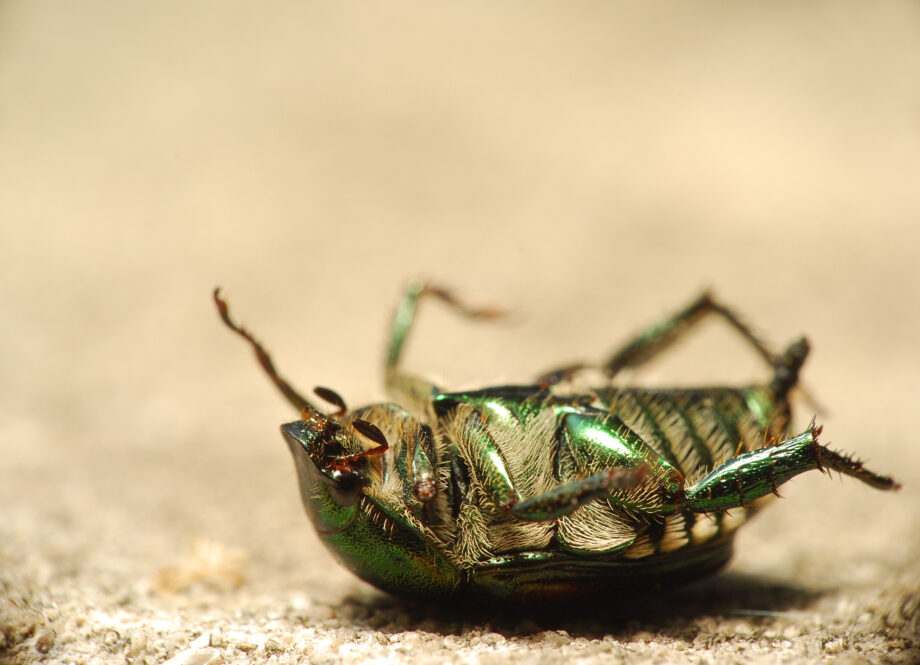
Dodging being eaten is a very good reason to adopt mimicking tactics. In 1848 the explorer Henry Bates discovered that one type of butterfly would mimic the colouration of another toxic one to avoid predation. Among his many achievements during an eleven-year stint in Brazil, which included documenting 8,000 species for the first time and sending back his 14,000-strong collection to the Natural History Museum, he gave his name to this type of mimicry.
We can see Batesian mimicry closer to home with the hoverfly, an insect that bears no sting but which imitates the colouration of wasps and bees to fool bird predators into avoiding them. ‘Be aware that any insect with yellow and black stripes might not be all it seems!’ warns Dr Mike Wheeler from the School of Science and the Environment at the University of Worcester. He names two other UK species which adopt the tell-tale strip: the wasp beetle with its black body and yellow stripes, and the hornet clearwing moth, which can be found near poplar trees in May. ‘The moth is completely harmless but closely resembles the shape and warning pattern of a hornet which of course is venomous.’
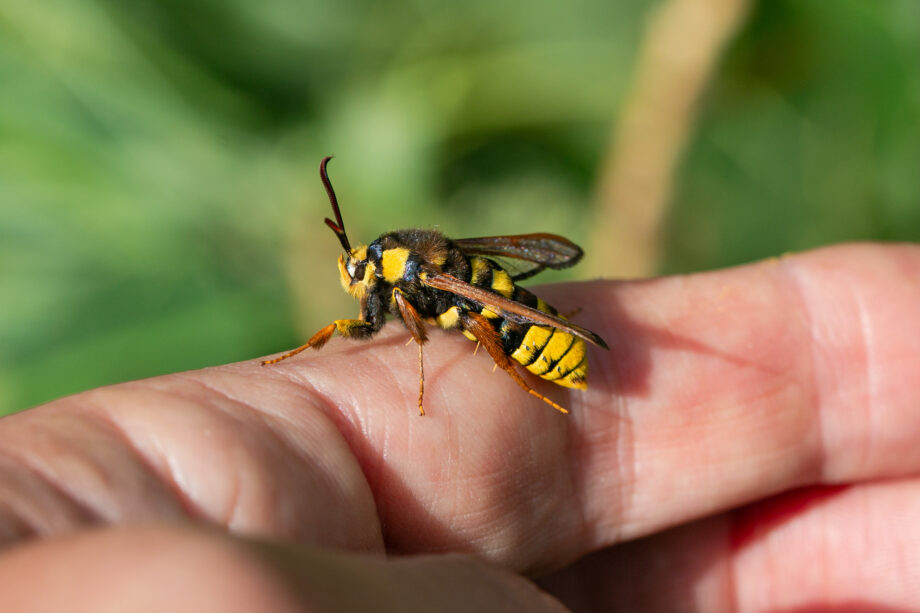
With their short lifespan, butterflies need to adopt every survival tactic possible and several harness their flamboyance. Perhaps these were what 19th century naturalist Alfred Russel Wallace had in mind when he noted that some creatures can ‘appear like actors or masqueraders dressed up and painted for amusement, or like swindlers endeavouring to pass themselves off for well-known or respectable members of society.’
A quick flash and a flutter of a peacock butterfly’s black-rimmed ‘eyes’ with their realistically streaked blue irises, is enough to confound a predator and make it withdraw. The comma butterfly’s ragged wings help it to masquerade as a leaf, but its disguise starts even earlier – its larvae resemble bird droppings. Its mimicking tactics allow it to hibernate in more open habitats than for example the small tortoiseshell and the peacock butterflies, which seek out dark, sheltered places. Adaptability is key in the insect world. The green shield bug follows the seasons by changing from bright green in the summer to a brown or bronze in the autumn as it prepares for hibernation.
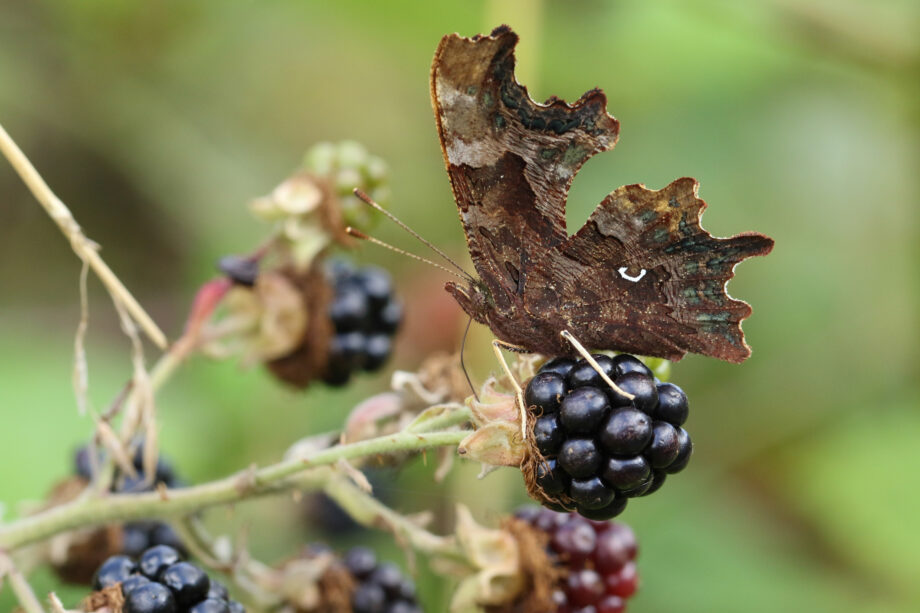
Other swindlers lurk below the surface and adopt a combination of inconspicuousness and cunning. Low and flat with a large head, the angler fish is adept at altering its appearance so it can blend into the seabed. The female has a long luminescent fin that it waves above its head to draw in its prey of small fish and squid, which mistake the lure for a worm.
Not all mimicry is visual. Last spring, Bicester police inspector Simon Hills was surprised to hear a continuous two-tone sound coming from over the road. Believing that one of his squad cars’ sirens had a faulty battery, he investigated, only to find that the noise was emanating from a fluting blackbird at the top of a tree. The local wildlife trust confirmed it was a territorial male. Birds of all kinds will use vocal imitation, expanding their repertoire to impress potential mates and deter territory-invaders. Starlings, our top-billing mimics, can duplicate sounds from a hawk to a phone ring. Sneakiest of all is the baby cuckoo, which fools its host mother, typically a meadow pipit, reed warbler or dunnock into feeding it, even though it is twice her size, by reproducing the begging call of her nestlings. It manages to sound like not just one chick, but her entire brood – most of which it will have already pushed out of the nest.
As politicians and Spitting Image targets have found out, mimicry can be cruel.
Machiavellian mimics and foreign fakes
The Indonesian mimic octopus can take on the appearance of jellyfish, crabs, sea snakes, shrimps, and lionfish to save itself from attack.
Some stick insects can take on the shapes of leaves and actively sway back and forth to mimic being rustled by the wind, saving them from being predated as well as helping them to ambush their prey.
A researcher in Italy was surprised to find a mouse-eared bat buzzing like a hornet – a rare instance of a mammal imitating an insect. Experiments indicated that this sound would deter its predator, the barn owl, although it was not clear whether it was the insect noise or the volume that put the owl off. Either way, it worked for the bat.
The bluestriped fang blenny is a small, elongated fish that lives in Indian Ocean coral reefs and specialises in mimicking a fish which cleans parasites from larger fish. This allows the fang blenny to approach the host and take a bite.
In 2012, a tree ocelot, a type of wild cat, was observed in Brazil imitating the call of a baby tamarin monkey. Some of the adult monkeys rushing to its aid realised the ruse and alerted those who had approached closer to the ocelot.
In 2019, researchers in Northern Peru found a species of tiny praying mantis that far from being inconspicuous – mantises change colour to blend into the environment – was brightly and conspicuously coloured. It was a wasp mimic.